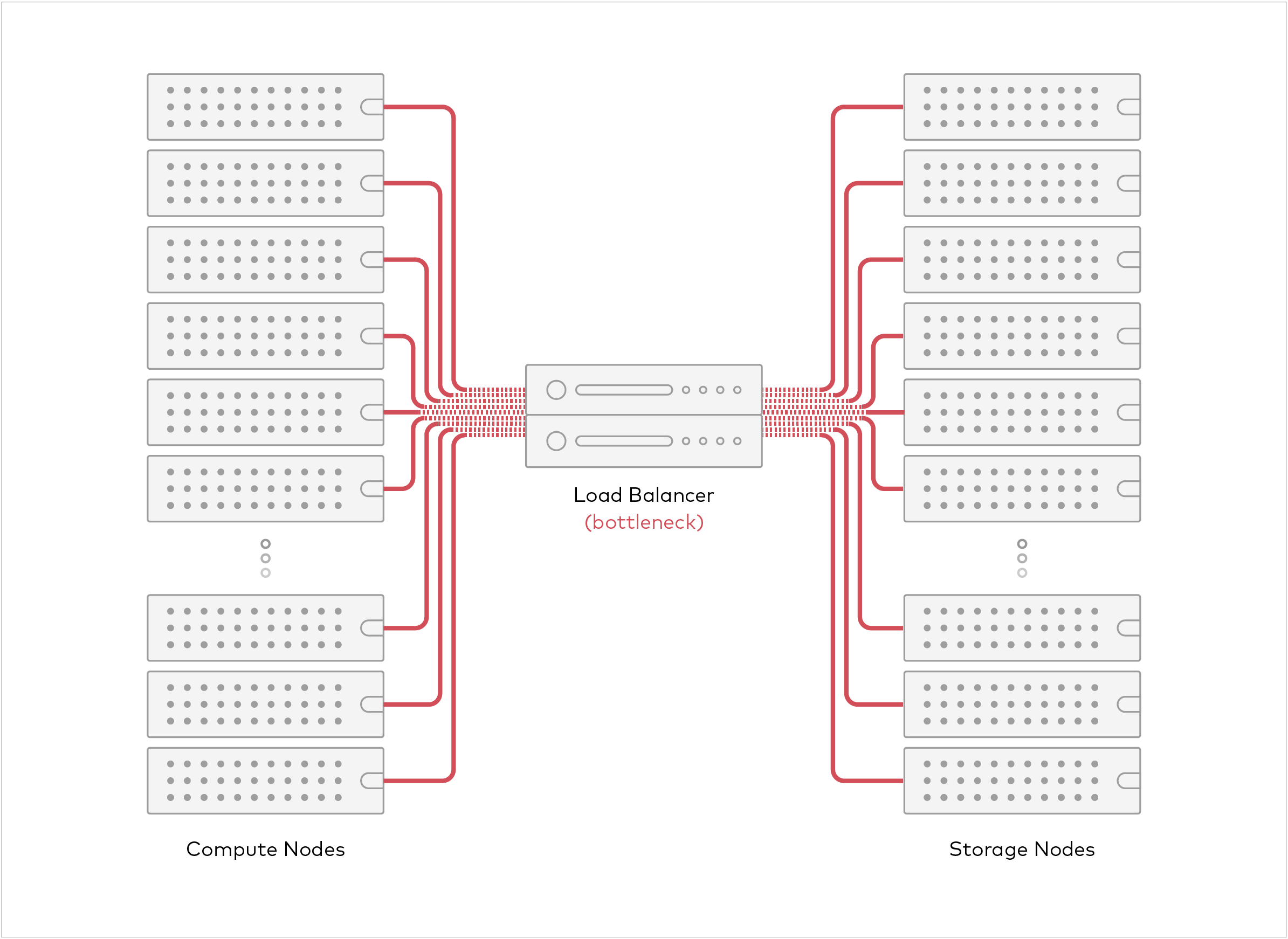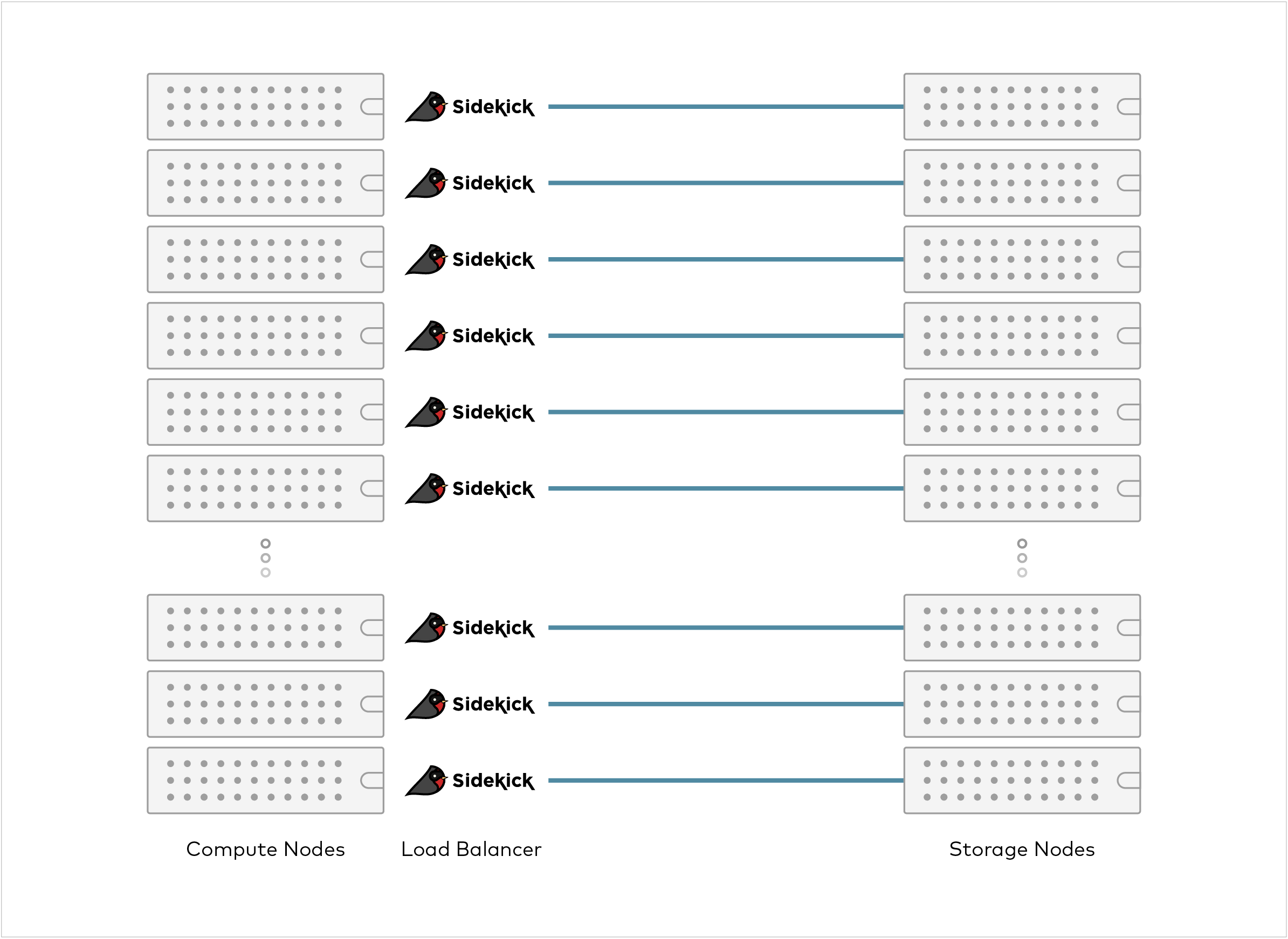Introducing Sidekick - A High Performance Load Balancer

Almost all of the modern cloud-native applications use HTTPs as their primary transport mechanism even within the network. Every service is a collection of HTTPs endpoints provisioned dynamically at scale. Traditional load balancers that are built for serving web applications across the Internet are at a disadvantage here since they use old school DNS round-robin techniques for load balancing and failover. DNS based solutions are beyond repair for any modern requirements.
While some of the software-defined load balancers like NGINX, HAProxy, and Envoy Proxy are full-featured and handle complex web application requirements, they are not designed for high-performance, data-intensive workloads.
Modern data processing environments move Terabytes of data between the compute and storage nodes on each run. One of the fundamental requirements in a load balancer is to distribute the traffic without compromising on performance. The introduction of a load balancer layer between the storage and compute nodes as a separate appliance often ends up impairing the performance. Traditional load balancer appliances have limited aggregate bandwidth and introduce an extra network hop. This architectural limitation is also true for software-defined load balancers running on commodity servers.
This becomes an issues in the modern data processing environment where it is common to have 100s to 1000s of nodes pounding on the storage servers concurrently.

Since there were no load balancers designed to meet these high-performance data processing needs, we built one ourselves. It is called Sidekick and harkens back to the days where every superhero (MinIO) had a trusty sidekick.
Sidekick solves the network bottleneck by taking a sidecar approach instead. It runs as a tiny sidecar process alongside of each of the client applications. This way, the applications can communicate directly with the servers without an extra physical hop. Since each of the clients run their own sidekick in a share-nothing model, you can scale the load balancer to any number of clients.

In a cloud-native environment like Kubernetes, Sidekick runs as a sidecar container. It is fairly easy to add Sidekick to your existing applications without any modification to your application binary or container image.
An Example: Distributing Splunk Indexers SmartStore access across the MinIO cluster.
Let’s look at a specific application example: Splunk.
In this case we will use MinIO’s as a high-performance, AWS S3, compatible object storage as a SmartStore endpoint for Spunk. Please refer to Leveraging MinIO for Splunk SmartStore S3 Storage whitepaper for an in-depth review.
Splunk runs multiple indexers on a distributed set of nodes to spread the workloads. Sidekick sits in between the Indexers and the MinIO cluster to provide the appropriate load balancing and failover capability. Because Sidekick is based on a share-nothing architecture, each Sidekick is deployed independently along the side of the Splunk indexer. As a result, Splunk now talks to the local Sidekick process and Sidekick becomes the interface to MinIO. These indexers talk to the object storage server via HTTP RESTful AWS S3 API.
Configuring Splunk SmartStore to use Sidekick:
[volume:s3]
storageType = remote
path = s3://smartstore/remote_volume
remote.s3.access_key = minio
remote.s3.secret_key = minio123
remote.s3.supports_versioning = false
remote.s3.endpoint = http://localhost:8080Sidekick takes a cluster of MinIO server addresses (16 of them in this example) and the health-check port and combines them into a single local endpoint. The load is evenly distributed across all the servers using a randomized round-robin scheduler.
$ sidekick --health-path=/minio/health/ready https://minio{1...16}:9000Sidekick constantly monitors the MinIO servers for availability using the readiness service API. For legacy applications, it will fallback to port-reachability for readiness checks. This readiness API is a standard requirement in the Kubernetes landscape. If any of the MinIO servers go down, Sidekick will automatically reroute the S3 requests to other servers until the failed server comes back online. Applications get the benefit of the circuit breaker design pattern for free.
Advantages of Sidekick
So what are the core advantages of using Sidekick over other load balancers?
Layer Reduction - Eliminates the intermediate layer and extra hardware requirements. This delivers superior performance and scalability.
Instant Failover - Detects failures early and directs application traffic to other servers avoiding expensive application timeouts and complex error handling requirements.
Performance - Sidekick is purpose-built for high-performance data transfers to handle large environments. It is tested to scale seamlessly with 100GbE networks and NVMe class storage.
Minimalism - Taking a minimalist approach is the key to its performance advantage. Other load balancers have evolved into bloatware where the complexity comes at the cost of manageability and performance.
Disadvantages of Sidekick
It is designed to only run as a sidecar with a minimal set of features. If you have complex requirements, there are better alternatives.
Just as importantly, we don’t anticipate changing this minimalist, performance oriented approach. Sidekick is designed to do a few things and do them exceptionally well.
Roadmap
The Sidekick team is currently working on adding a shared caching storage functionality. This feature will enable applications to transparently use MinIO on NVMe or Optane SSDs to act as a caching tier. This will have applications across a number of edge computing use cases.
How to Get Started
Sidekick is licensed under GNU AGPL v3 and is available on Github. We encourage you to take it for a spin. If you have already deployed MinIO you will immediately grasp its minimalist similarity. If not, take the opportunity to fire up the entire object storage suite. We have superb documentation and the legendary community Slack channel to help you on your way.
